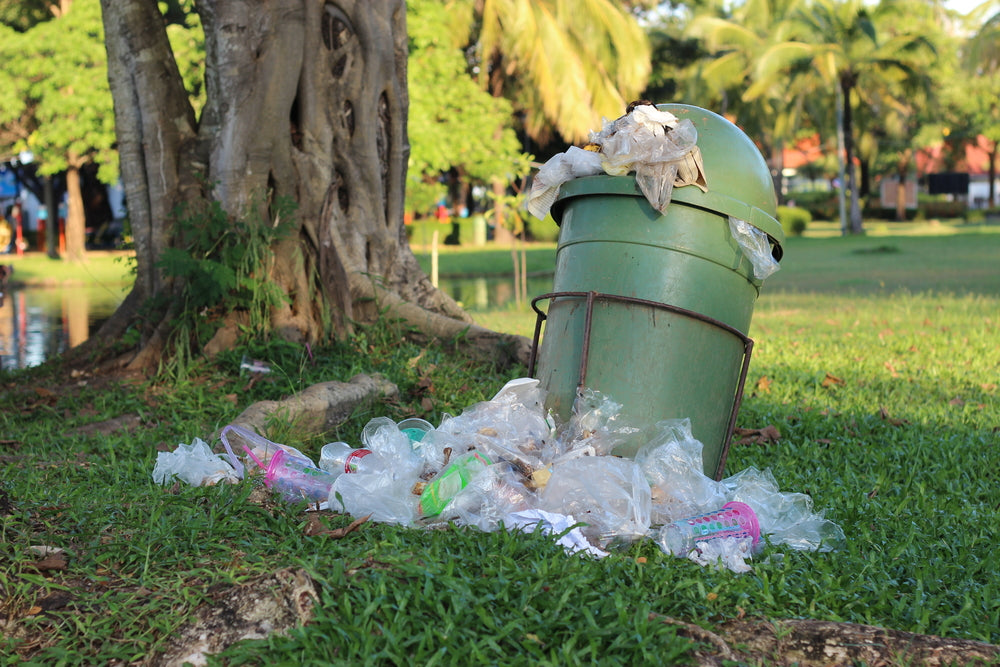Tackling The Serious Issue Of Park Waste
Posted by Securr Blogger on
Prepare to be astonished by the staggering reality that visitors to our national parks generate a jaw-dropping 100 million pounds of waste annually. This astounding figure is equivalent to filling the Statue of Liberty more than 1,800 times over. To put it in perspective, if all this waste were crammed into standard household trash bags, it would require a mind-boggling 20 million bags, stretching from New York to Los Angeles and back, not once, but twice. That's an immense amount of litter to contend with.
Despite the massive quantity of waste produced, many park-goers remain blissfully unaware of the environmental consequences of their discarded items. Surprisingly, a study conducted jointly by Subaru of America and the National Parks Conservation Association unveiled that a whopping 59 percent of Americans lack awareness regarding the waste management challenges confronting our national parks. Even the recent government shutdown, which left many parks understaffed, failed to fully enlighten visitors about the ramifications of their waste disposal habits. Many individuals are still oblivious to the detrimental impact their waste has on these natural treasures.
While waste takes various forms within national parks, research has indicated that the majority of the waste originates from items brought into the parks by visitors. Notably, a significant portion of this waste comprises food scraps and plastic water bottles, both of which not only mar the park's aesthetics but also pose threats to the local wildlife.
To aid in maintaining cleanliness within these parks, several companies and organizations have taken the initiative to raise awareness and provide the necessary tools for effective waste collection. One notable example is BearSaver, which proudly collaborates with our national parks to supply them with high-quality, animal-resistant trash receptacles and recycling bins. Subaru's Zero Landfill Initiative has also assumed a leading role in driving change, with its Subaru of Indiana facility successfully achieving zero landfill waste status since 2004.
In pursuit of its zero landfill initiative, Subaru has adopted a systematic approach that involves segregating all food waste at its plant for composting, and recycling dust at a separate facility to recover copper and other metals. Despite producing around 400,000 vehicles annually, the company has achieved an impressive waste reduction of zero over the past decade. Subaru is now extending its expertise to businesses, schools, and other organizations. Additionally, three of our cherished national parks—Denali, Grand Teton, and Yosemite—are conducting pilot programs based on Subaru's initiative.
It's important to acknowledge that each park faces unique logistical challenges. For instance, Alaska's Denali National Park lacks a market for composted food waste, while in the Tetons, composting attracts bears. Nonetheless, these parks are diligently implementing initiatives to move closer to their zero-waste goals. Denali has initiated a Zero Landfill Youth Ambassador Program, while BearSaver has assisted Yosemite by introducing new food storage solutions and installing recycling and trash containers in high-traffic areas. Through these collective endeavors and similar initiatives, our national parks will continue to be preserved for generations to treasure.
Overcoming Challenges
Despite the massive quantity of waste produced, many park-goers remain blissfully unaware of the environmental consequences of their discarded items. Surprisingly, a study conducted jointly by Subaru of America and the National Parks Conservation Association unveiled that a whopping 59 percent of Americans lack awareness regarding the waste management challenges confronting our national parks. Even the recent government shutdown, which left many parks understaffed, failed to fully enlighten visitors about the ramifications of their waste disposal habits. Many individuals are still oblivious to the detrimental impact their waste has on these natural treasures.
Managing The Waste
While waste takes various forms within national parks, research has indicated that the majority of the waste originates from items brought into the parks by visitors. Notably, a significant portion of this waste comprises food scraps and plastic water bottles, both of which not only mar the park's aesthetics but also pose threats to the local wildlife.To aid in maintaining cleanliness within these parks, several companies and organizations have taken the initiative to raise awareness and provide the necessary tools for effective waste collection. One notable example is BearSaver, which proudly collaborates with our national parks to supply them with high-quality, animal-resistant trash receptacles and recycling bins. Subaru's Zero Landfill Initiative has also assumed a leading role in driving change, with its Subaru of Indiana facility successfully achieving zero landfill waste status since 2004.
Expanding Efforts
In pursuit of its zero landfill initiative, Subaru has adopted a systematic approach that involves segregating all food waste at its plant for composting, and recycling dust at a separate facility to recover copper and other metals. Despite producing around 400,000 vehicles annually, the company has achieved an impressive waste reduction of zero over the past decade. Subaru is now extending its expertise to businesses, schools, and other organizations. Additionally, three of our cherished national parks—Denali, Grand Teton, and Yosemite—are conducting pilot programs based on Subaru's initiative.It's important to acknowledge that each park faces unique logistical challenges. For instance, Alaska's Denali National Park lacks a market for composted food waste, while in the Tetons, composting attracts bears. Nonetheless, these parks are diligently implementing initiatives to move closer to their zero-waste goals. Denali has initiated a Zero Landfill Youth Ambassador Program, while BearSaver has assisted Yosemite by introducing new food storage solutions and installing recycling and trash containers in high-traffic areas. Through these collective endeavors and similar initiatives, our national parks will continue to be preserved for generations to treasure.

